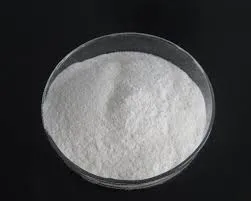
Nov . 04, 2024 09:43 Back to list
hydroxyethyl cellulose manufacturing process
The Manufacturing Process of Hydroxyethyl Cellulose An Overview
Hydroxyethyl cellulose (HEC) is a cellulose ether that is widely used in various industries, including pharmaceuticals, cosmetics, food, and construction. Its unique properties, such as water solubility, thickening, and film-forming capabilities, make it a versatile ingredient. The manufacturing process of HEC involves several key steps that transform cellulose into this valuable compound.
The process begins with the extraction of cellulose from natural sources, typically wood pulp or cotton linters. This raw cellulose is then subjected to a series of purification steps. The first step is the removal of lignin, hemicellulose, and other impurities through a chemical treatment process involving sodium hydroxide or sulfuric acid. This results in a purified cellulose product known as alpha-cellulose, which serves as the raw material for HEC production.
Once purified cellulose is obtained, it is subjected to etherification, the core step in HEC manufacturing. The cellulose is mixed with ethylene oxide in the presence of a catalyst, usually a strong base such as sodium hydroxide. Ethylene oxide reacts with the hydroxyl groups on the cellulose chains, introducing hydroxyethyl groups. This reaction occurs under controlled temperature and pressure conditions to ensure that the desired degree of substitution is achieved, which is crucial for the final product’s properties.
hydroxyethyl cellulose manufacturing process

After the etherification reaction, the resultant HEC is typically a thick, viscous liquid. The mixture is then neutralized to stop the reaction, and excess ethylene oxide is removed. The solution undergoes purification to eliminate unreacted agents and by-products, often through filtration and washing steps. The purified HEC solution is concentrated by evaporation to reach the desired solids content.
Following concentration, the next step is drying. Various drying methods can be employed, such as spray drying or drum drying, to convert the viscous liquid into a free-flowing powder. The drying process must be carefully controlled to avoid decomposition of the product and to preserve its functional properties.
Finally, the HEC is milled to achieve the desired particle size and is then packaged for distribution. Quality control measures are implemented throughout the manufacturing process to ensure that the product meets industry standards. This includes testing for viscosity, particle size distribution, and purity.
In conclusion, the production of hydroxyethyl cellulose involves a meticulous process of extraction, purification, etherification, and drying. Each step is crucial in determining the final quality and functionality of the product. As industries continue to seek versatile and effective additives for their applications, the demand for HEC is expected to grow, making its manufacturing process an essential area of focus for researchers and manufacturers alike. Its utility across various sectors underscores the importance of continual innovation and improvement within its production methodologies.
-
tile-bonding-additives-for-stronger-bonds
NewsAug.22,2025
-
construction-grade-rdp-for-wholesale-needs
NewsAug.22,2025
-
trusted-wholesale-hec-partners
NewsAug.22,2025
-
hec-solutions-for-industrial-excellence
NewsAug.22,2025
-
construction-additives-need-hpmc-essentials
NewsAug.22,2025
-
hpmc-versatile-cellulose-ether-for-industries
NewsAug.22,2025







